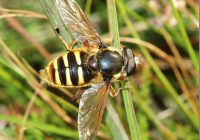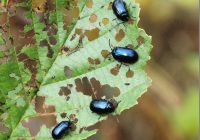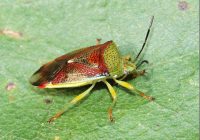Dr Phil Smith’s Wildlife Notes
September 2017
It’s supposed to rain in September and, in complete contrast to 2016, this year it did, with measurable precipitation on about 16 days, though in no great quantity. Total rainfall was about average, doing little to restore the sand-dune water-table which remained below ground at the Devil’s Hole blowout, while Wicks Lake at Formby Point was bone-dry throughout.
A visit Highfield Moss near Golborne at least once a year is a must, so I joined Trevor Davenport on 1st for a trip to this wonderful raised-bog, a surviving relict of the mosslands that once stretched almost unbroken from Liverpool to Manchester. It was cloudy, breezy and rather cool, not ideal for the dragonflies we hoped to find. Nevertheless, several Emerald Damselflies were soon spotted around the large pools, while even better were Black Darters, a typical peatland speciality. I instinctively headed for a more sheltered area of tall vegetation and bumped into a superb male Common Hawker hanging up in the rushes. Trevor soon joined me and joyfully pointed out another of the same species within a few feet of the first. This was a female of a rare pale-blue-spotted form mostly known from Scotland. We snapped away happily until both insects woke up and beat a hasty retreat. Other goodies here were three different grasshoppers, including the Meadow Grasshopper which, though widespread further south, seems strangely restricted to peat-bogs in northern England. Finally, a large colourful hoverfly landed at my feet, photographs showing it was the Bog Hoverfly Sericomyia silentis, another wetland specialist.
The importance of shelter for insects was shown again a few days later when, in equally unpromising conditions, I headed with Trevor up to the Green Beach from Ainsdale. Here, Alder bushes provided a respite from onshore breezes, attracting several dragonflies, including Migrant and Brown Hawkers and dozens of Common Darters. Butterflies were represented by Red Admiral, Speckled Wood and the sadly declining Small Heath, while three large hairy Fox Moth caterpillars also attracted our attention. We were pleased to find the Mottled Grasshopper, a tiny species which likes warm, open sandy conditions with short vegetation. Nearby were Spiked and Green Shieldbugs, two of the 11 members of this family that I have recorded on the Sefton Coast. A dark-blue beetle on the Alders was later identified by Gary Hedges of World Museum Liverpool as the Alder Leaf-beetle Ageslastica alni. This was thought extinct until it appeared in Manchester in 2004, since when it has spread widely in northwest England.
The following day I headed off to Hightown with Patricia Lockwood and Joshua Styles for some botanical recording. The shore provided an interesting variety of scarce strandline and shingle plants, including Ray’s Knotgrass, Isle of Man Cabbage and Yellow Horned-poppy. Unexpectedly, a nearby dune ridge had a specimen of Devil’s-bit Scabious, while the regionally rare Variegated Horsetail was found in a scrape dug for Natterjack Toads. Sea Buckthorn was rapidly invading the scrape, so we spent some time uprooting it. On the way back across the dunes, we picked up a sick young Hedgehog which was dropped off at the vets in Formby.
My interest in shieldbugs prompted a mid-month visit to Freshfield Dune Heath Nature Reserve where I have previously had good results at this time of year. I wasn’t disappointed, no less than five species being located, including the very colourful Birch Shieldbugand the duller but rarer Bronze Shieldbug. A few Small Coppers and a patrolling Southern Hawker added further interest.
One of the most important events on the coast for many years took place on 15th September when the National Trust and Sefton Council formally agreed the transfer of 204ha of duneland to the Trust, adding to their existing 210ha property at Formby Point. This includes the Lifeboat Road area and Ravenmeols Local Nature Reserve, extending from the Trust’s current land boundary about 2km south to the edge of Cabin Hill National Nature Reserve. All of this area has a high wildlife value, reflected in protective designations: Site of Special Scientific Interest, Special Area of Conservation and RAMSAR wetland of international importance. The Trust is holding a series of meetings with “stakeholders” and others seeking views on the future management of their estate. I am helping with guided walks for National Trust staff and volunteers to familiarise themselves with the new area, which includes the iconic Devil’s Hole. For further information, visit: https://www.nationaltrust.org.uk/formby/projects/get-involved—the-future-of-formby-point




